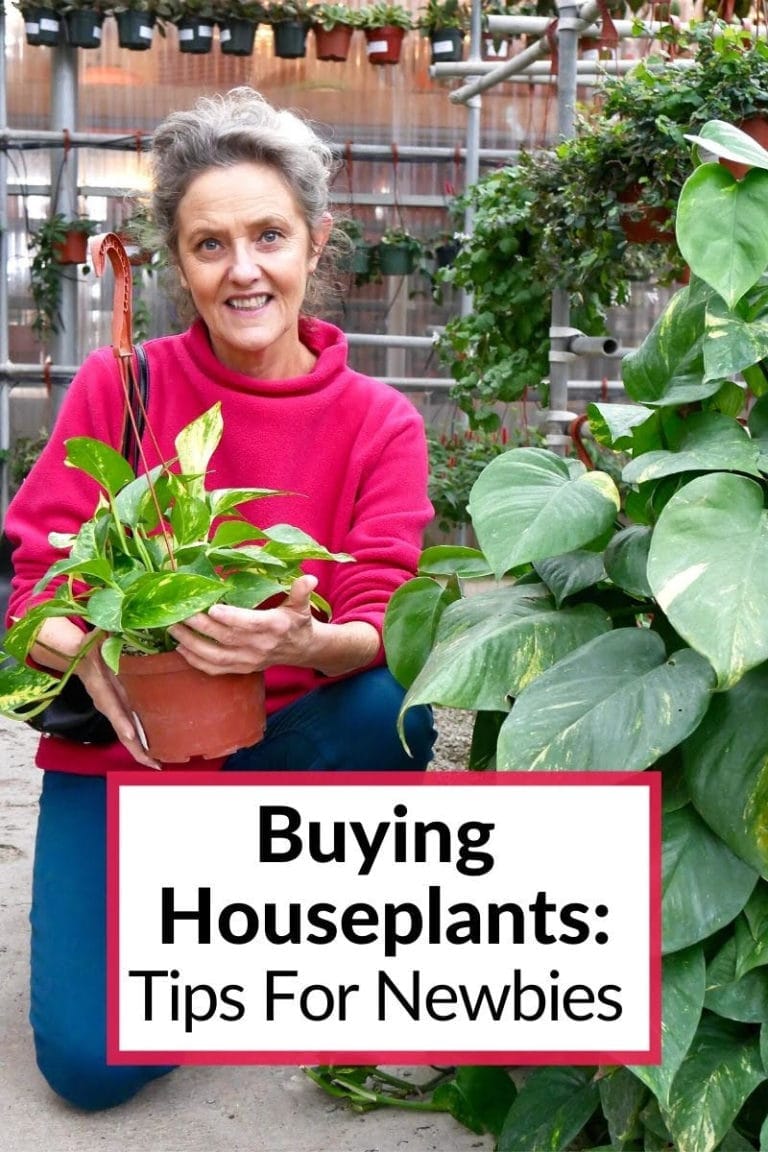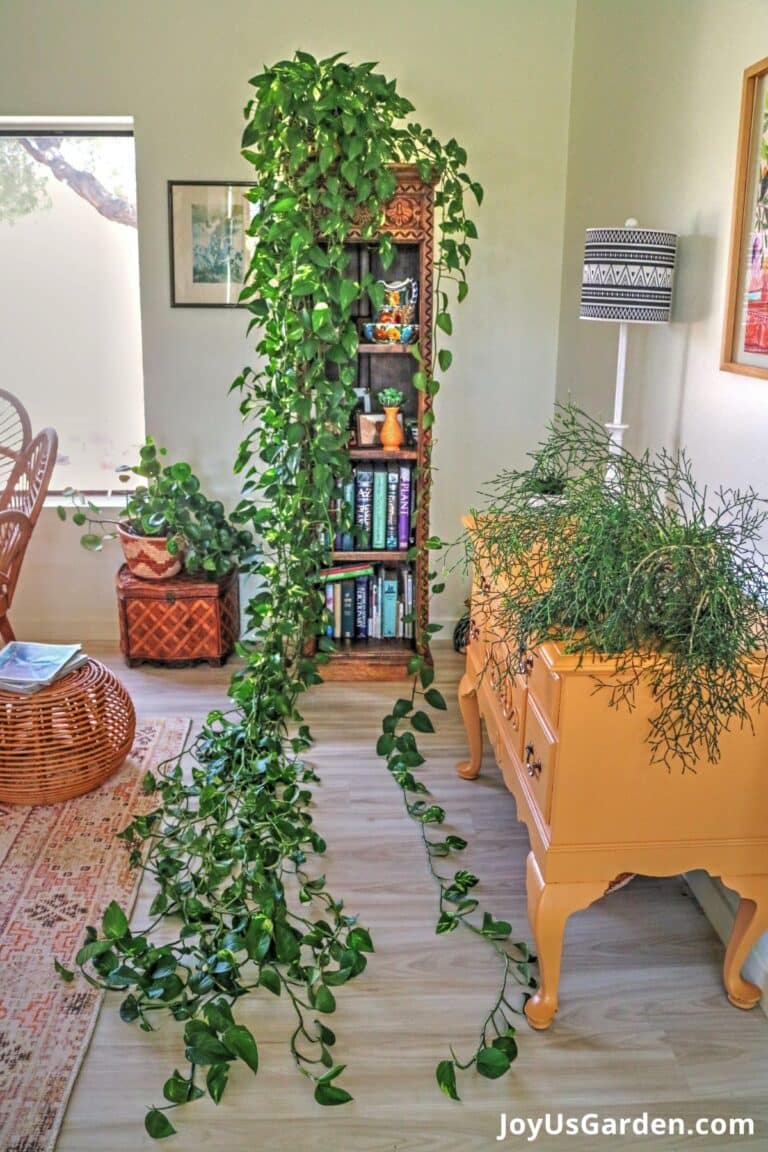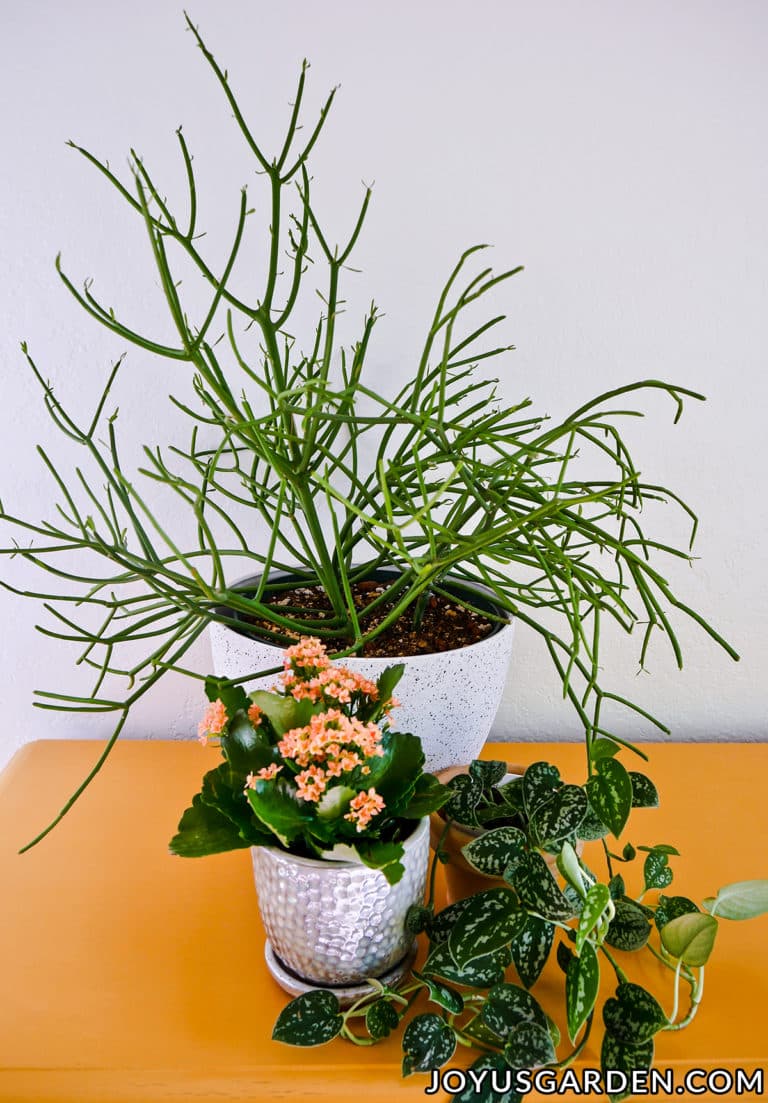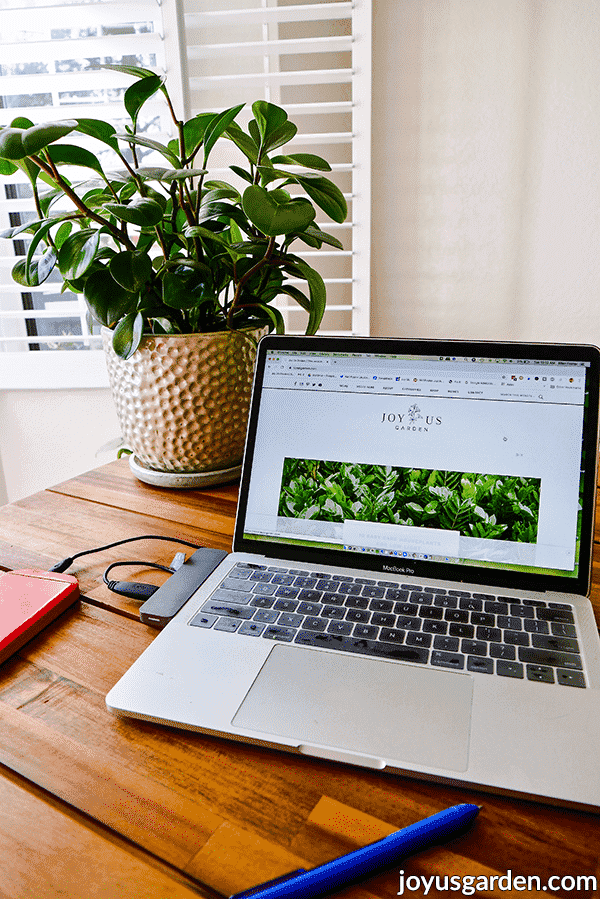Ponytail Palm Care: How To Grow Beaucarnea Recurvata
Fellow plant enthusiasts, if you’re anything like me, you probably have a soft spot for the quirky and unique Ponytail Palm. I got my first one in a 6″ pot standing 10-12″ tall when I lived in San Francisco over twenty years ago.
Even though it grew painfully slow (the light wasn’t as bright as this plant would have liked), I fell in love with it nonetheless. Here’s what I’ve learned about Ponytail Palm care over the years.
This funky plant has been a staple in my collection (growing both indoors and outdoors) for years now. Ponytail Palms (Beaucarnea recurvatas) aren’t true palms; they’re succulents. This is good to know regarding the watering; more on that below.
My 3-trunked beauty grows outside here in Tucson. I don’t have it in full sun all day because that would be too intense. It grows on my covered patio and gets lots of bright indirect light and full sun in the early morning. My small one grows indoors next to the fireplace.
This plant is about as easy as it gets; this post will cover how to care for it indoors.
- Botanical Name: Beaucarnea recurvata
- Common Name: Ponytail Palm, Elephant’s Foot Plant, Elephant Foot Tree
Ponytail Palm Traits
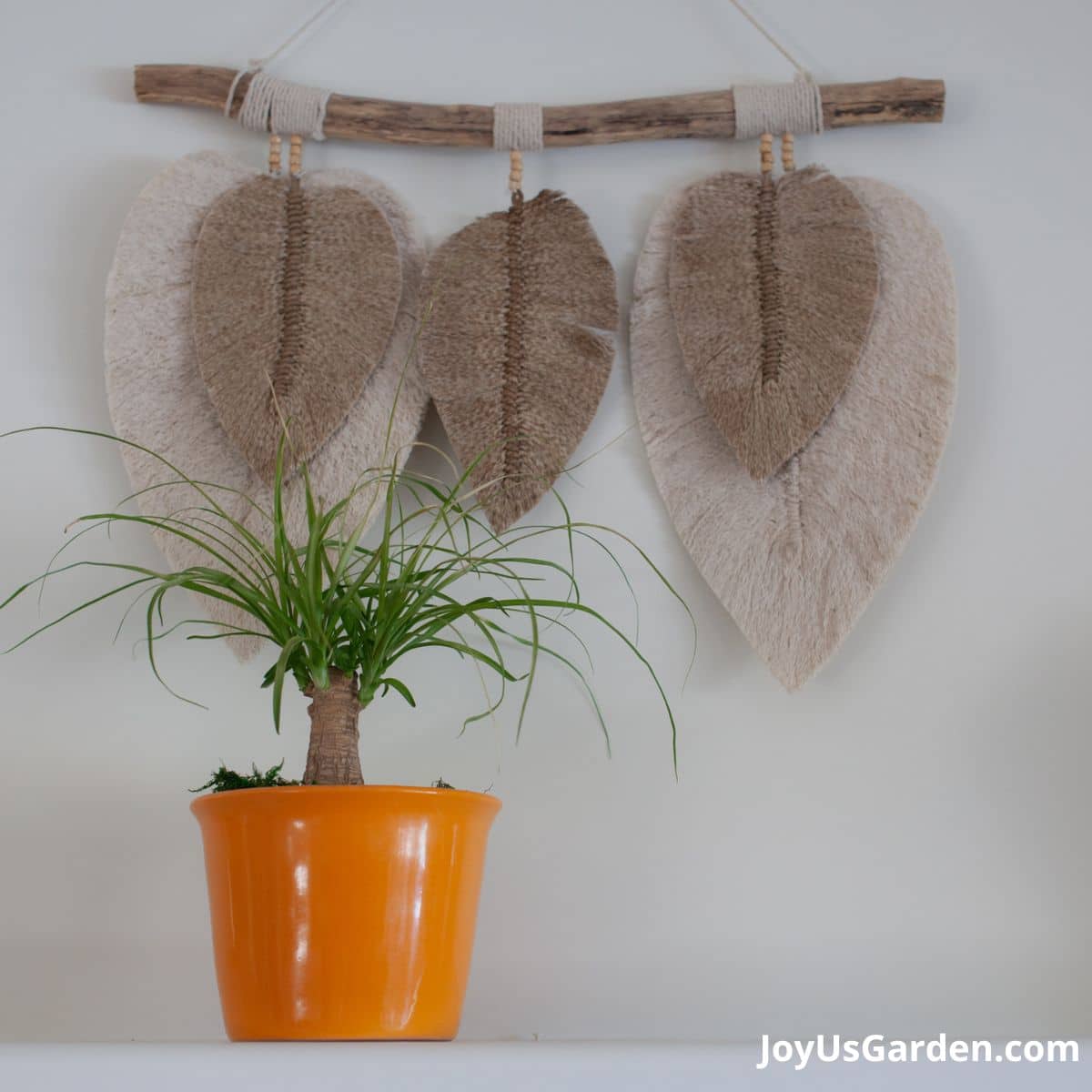
Size
They’re sold in pots ranging from 2″ to 14″ in the houseplant trade. The larger plants are very heavy because the bulbous bases grow as the plant grows.
They can reach 15-30′ when growing as an outdoor plant. You rarely see them above 5′ tall indoors.
Growth Rate
How to make a Ponytail Palm grow taller? That’s a question I’ve been asked a few times! The answer is in the “light requirements” section.
These plants have a slow growth rate, especially as houseplants. That’s why the taller ones are so expensive. If you could find a 4′ Ponytail, the cost would average $250. It won’t outgrow its space anytime soon!
Uses
Ponytails are primarily tabletop plants. They are considered to be accent plants – ones that steal the show because of their striking appearance. The taller specimens, floor plants, will set you back a pretty penny.
I’ve also seen them in dish gardens and used as bonsais.
Big Draw
The big bulbous base and the curly leaves that spray out from the top of the trunk. This plant adds a fun vibe to any home.
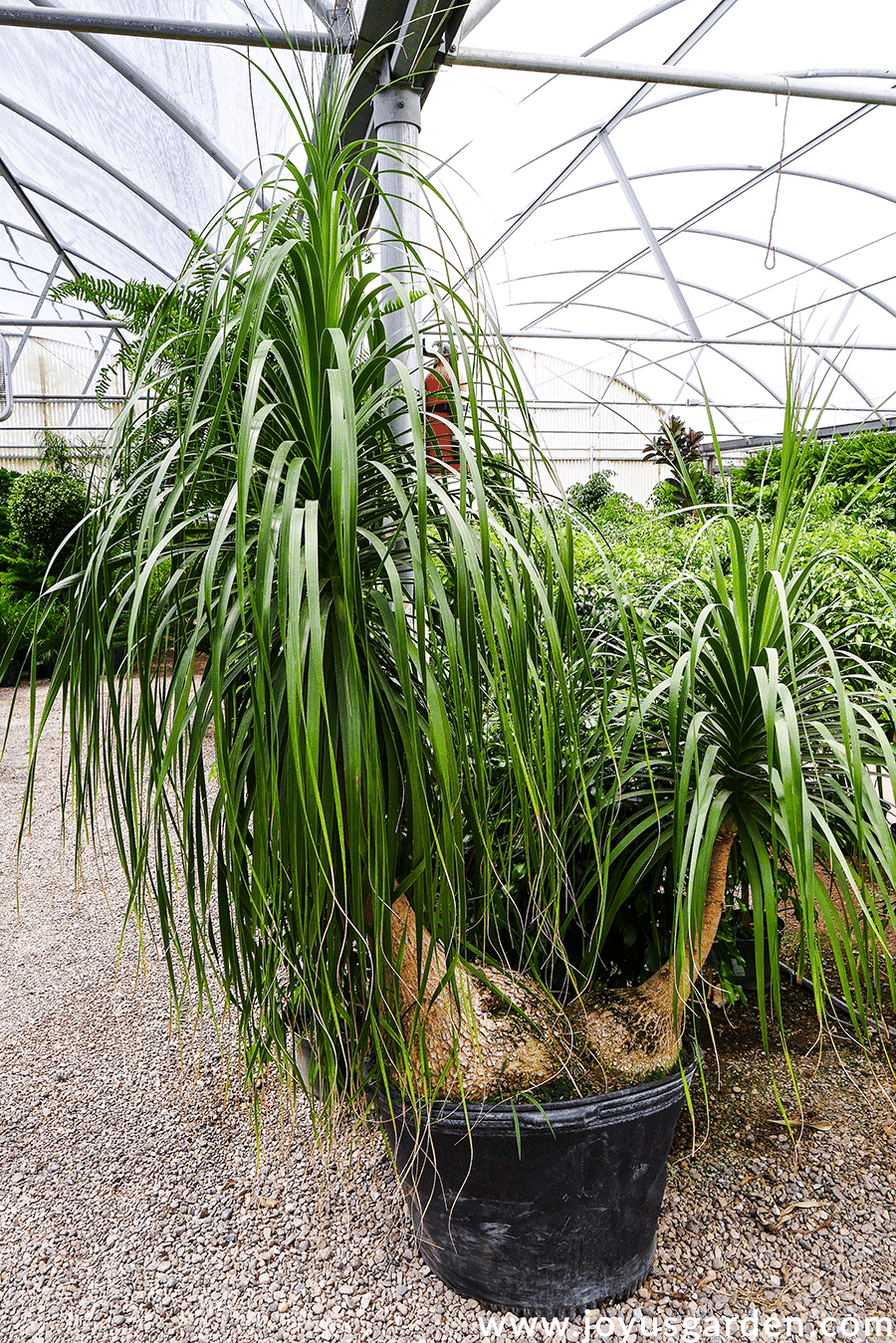
Ponytail Palm Care Tips
Light Requirements
This is a great indoor plant if you have a lot of natural light in your home. A Ponytail Palm does best in bright light. Just make sure it’s not in any or against any hot windows. Near a west or south-facing window is fine; not touching it.
Ponytails are slow-growing, but high light levels are required to get them to grow faster. They’ll tolerate moderate light levels, but the growth will be slower. They don’t do well in low light over the long haul.
In the darker winter months, you may have to move yours closer to a location with more light.
If your Ponytail is getting light on one side only and leaning towards the light source, you’ll have to rotate it as needed to grow straight.
Watering
I’ll mention again that Ponytail Palm plants are succulents. They store water in their onion-shaped bulbous base and trunk (or stem). If you overwater one, i.e., too often, the bulb and stem will rot out. Even though they’re hard on the outside, they’re soft on the inside and subject to stem rot, a bacterial root rot.
Planting it in a container with at least one drainage hole on the bottom of the pot is recommended so the excess water can freely drain out. A well-draining and aerated potting mix will also help.
Water a Ponytail Palm when the soil is dry. I water my Ponytail every three weeks in the brighter months and every four-six weeks in winter.
The above is a general guideline for you – adjust it accordingly. Your plant might need watering less or more often. Many variables come into play, like the pot size, the type of soil it’s planted in, its growing location, and your home’s environment. The more light and warmth, the more often yours will need watering.
Larger specimens in larger pots and those growing in cooler temps need watering less often.
Here’s a Guide to Watering Indoor Plants. This will help you determine how often you water your green babies.
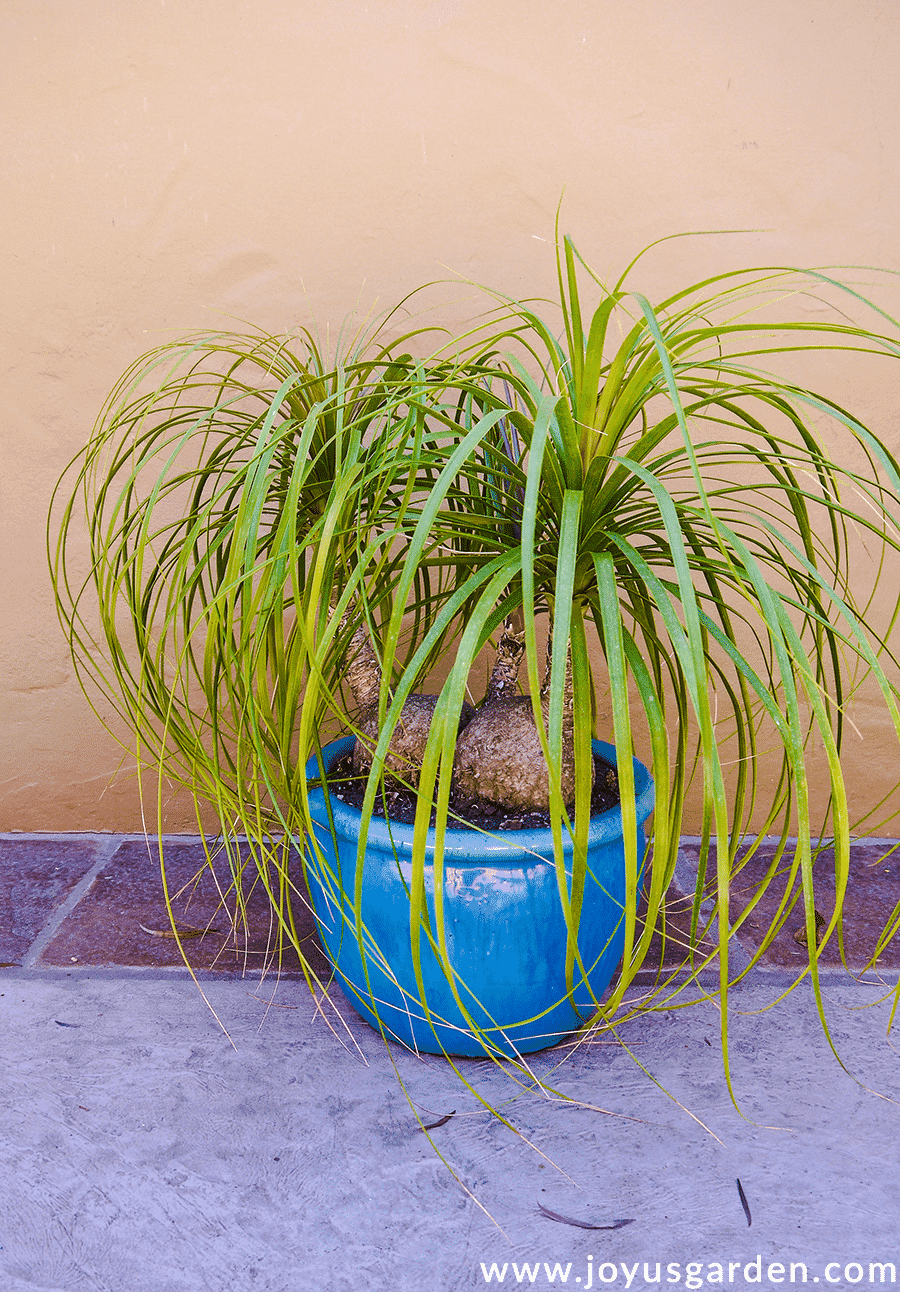
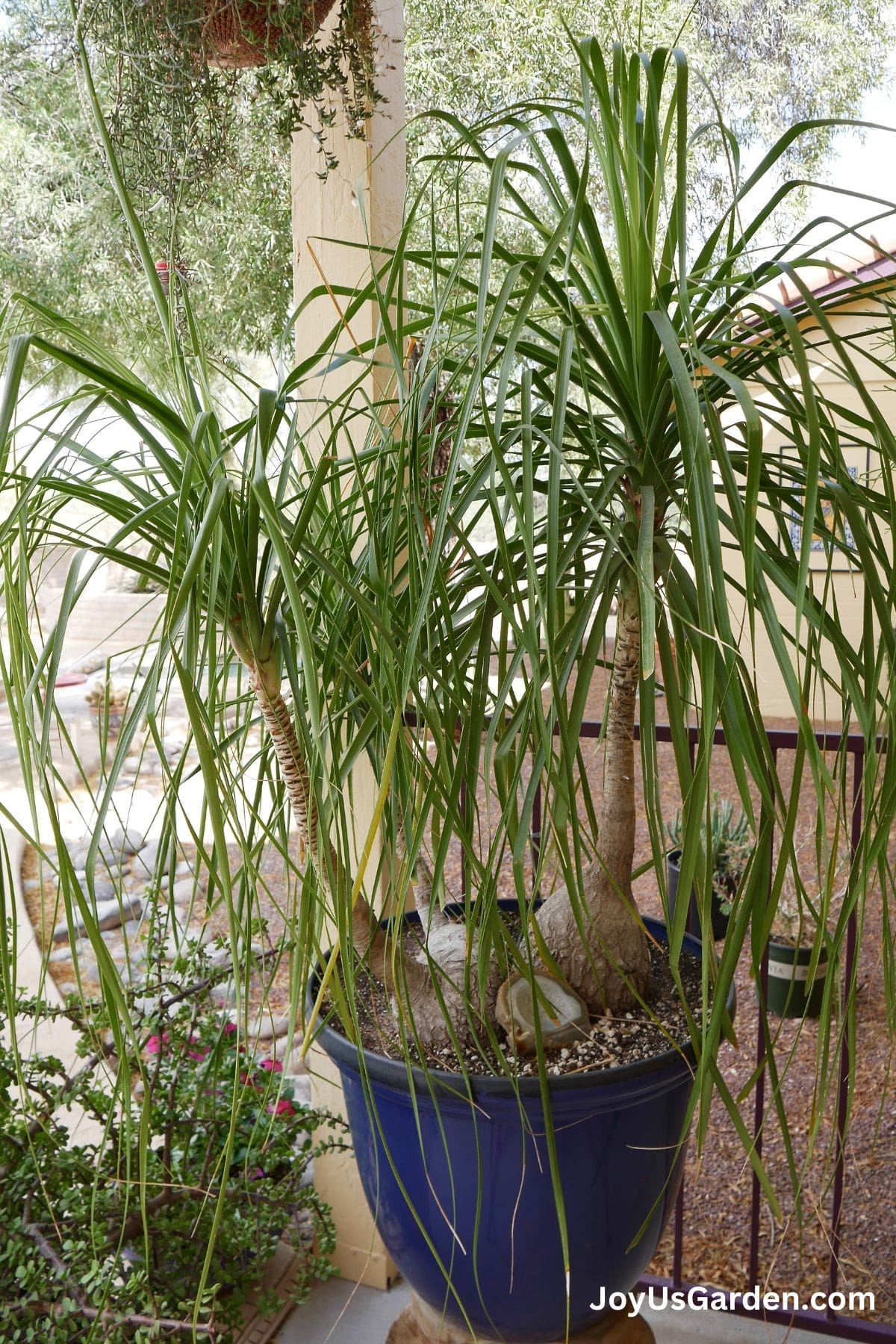
Temperature
If your home is comfortable for you, the same goes for your houseplants. My large Ponytail Palm plant Seen in the photo above) grows outdoors in Tucson, where temperatures soar to 110F in summer and can dip to 28F in winter.
They handle temperature fluctuations just fine. When growing indoor ponytail palms, keep them away from cold drafts and air conditioning or heating vents.
Humidity
Ponytail Palms are native to the semi-desert regions in Mexico. Because they’re desert plants, they can handle the dry air in our homes just fine.
Their leaves get brown tips, which is a reaction to the dry air. It doesn’t make sense, but it happens. As you can imagine, mine growing outdoors here in the desert is loaded with them!
Fertilizing / Feeding
I fertilize my tropical houseplants with Grow Big, Liquid Kelp, and Maxsea or Sea Grow five to seven times during our long growing season. I alternate these liquid fertilizers and don’t use them all together.
I feed my Ponytail Palms less often, three times a year in early spring, mid-summer, and early fall.
I give them a light application of worm compost with a light layer of compost over that every spring. Easy does it – a 1/4″ layer of each is plenty for a Ponytail in a smaller-sized pot.
Regarding fertilizers, don’t overdo it because salts build up and can burn the plant’s roots. This will appear as yellow and/or brown spots on the leaves.
Avoid fertilizing a stressed houseplant, i.e., bone dry or soaking wet. You don’t want to fertilize houseplants in late fall or winter because it’s not the active growing season.
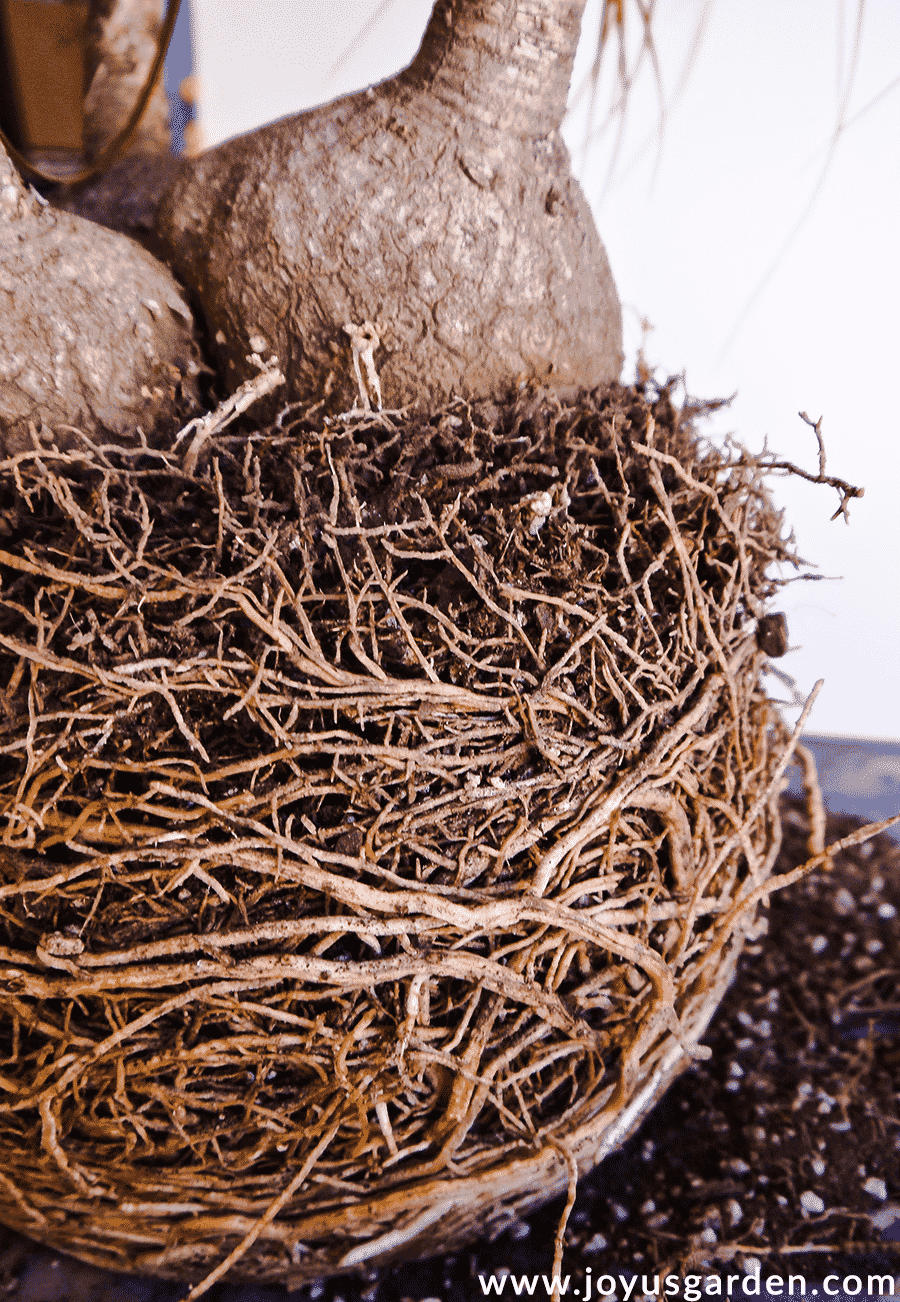
Repotting
The best times to repot a Ponytail Palm are spring and summer. Early fall is fine if you’re in a climate with warmer winters like I am.
This popular houseplant doesn’t need repotting often because it grows so slowly. It’s fine growing slightly tight in the pot. This is evidenced by photos of good-sized Ponytail Palm specimens growing in shallow bonsai dishes.
The bulb grows as the plant grows, so you may have to repot it into a bigger pot at some point to keep everything in scale. When repotting, I plant with the rootball sticking up about an inch above the soil line. The weight of the bulb and stem will cause it to sink a bit in the light mix.
Other reasons for repotting: a plant too tight in its pot has difficulty taking up water and receiving enough oxygen to the roots. And, sometimes, the soil gets old, loses nourishment, and needs to be replaced.
I’ve repotted my 3-headed Ponytail Palm three times, which I bought at the Santa Barbara Farmers Market seventeen years ago. I will repot it into a new pot this summer, but it’s about the same size. Just a freshen-up on the potting mix!
You can see how I transplanted my large Ponytail Palm here.
Soil
Ponytail Palms do best in a well-draining, light soil mix. An aerated mix will help to prevent water retention and help prevent root rot.
I would recommend using a cactus and succulent mix for your indoor Ponytail Palm. Alternatively, you could use 1/2 potting soil and 1/2 succulent and cactus mix.
You can plant a Ponytail Palm in potting soil (with pumice or perlite added in), but you have to be very mindful not to over-water it. Remember that the bulbous trunk rots out easily.
I make my own Succulent & Cactus Mix. Below are some to buy online if you can’t find any locally or don’t want to make your own.
- Bonsai Jack (this 1 is very gritty; great for those prone to overwatering!)
- Hoffman’s (this is more cost-effective if you have a lot of succulents, but you might have to add pumice or perlite)
- Superfly Bonsai (another fast-draining one like Bonsai Jack which is great for indoor succulents).
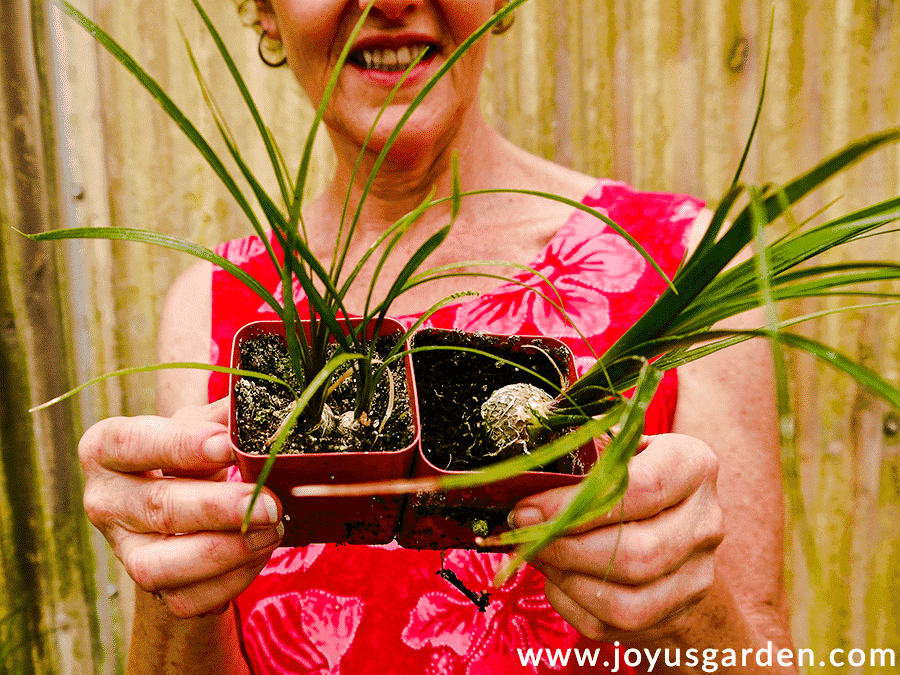
Ponytail Palm Pruning
I’ve never pruned my Ponytail Palms because they haven’t needed it. The lowest leaves gradually turn yellow and die off (this happens very slowly) as the plant grows. I pull the yellow leaves off the trunk; I don’t prune them because they come off easily.
Ponytail Palms, like dracaenas, are notorious for brown leaf tips. If they bother you, trim them off. Just don’t make blunt cuts; they don’t look natural.
You can prune the head and trunk (stem) off of a Ponytail Palm plant and propagate it. If enough of the trunk is left on the bulb, new growth in the form of multiple sprouts will appear off the trunk of the parent plant.
Straight cuts usually bring multiple sprouts where cut and sometimes a few at the base. Be warned: any signs of new growth can take a few months to appear, so be patient.
Some Of Our General Houseplant Guides For Your Reference: Guide To Watering Indoor Plants, Beginner’s Guide To Repotting Plants, How to Clean Houseplants, Winter Houseplant Care Guide, Plant Humidity: How I Increase Humidity For Houseplants, Buying Houseplants: 14 Tips For Indoor Gardening Newbies
Propagation
The growers propagate them by seed. Or, in the case of my 3-headed Ponytail Palm, they can be divided.
I’ve only done this once, but they can also be propagated by removing the pups (the babies or new growth via sprouts) at the base. You can pull them away from or cut them off the bulb using Clean & Sharp Pruners or a knife.
When I cut, I was sure to get some roots along with the baby plant. I planted it in a 4″ pot filled with succulent and cactus mix and kept it relatively moist until the roots grew more established.
Pests
Mine have never gotten any, but I’ve seen Ponytail Palms with Mealybugs and Spider Mites. Scale can reportedly be an issue too.
As with any pests, keep your eye out for them and take control immediately. They’ll spread from houseplant to houseplant in no time.
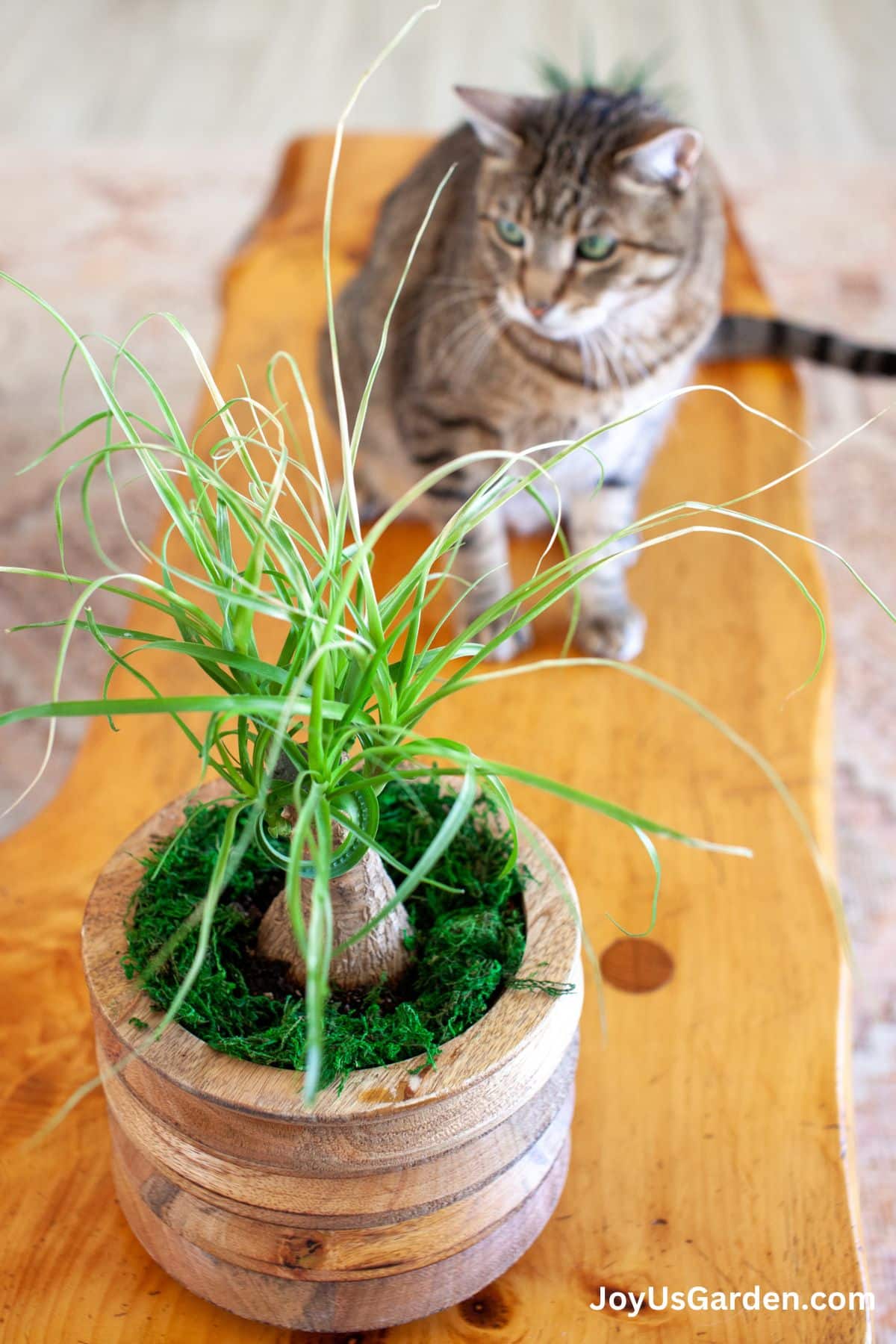
Toxicity
Hip, hip, hooray, this is a plant that the ASPCA lists as non-toxic for both cats and dogs.
If you have kitties, be aware they’ve been known to chew on the long, crunchy leaves. This might make them sick. My kitty Ivan, who lived with us in San Francisco, loved to munch on PP leaves and bromeliads.
Ponytail Palm Care In Winter
There are two important things to know. You may have to move your Ponytail to a location with brighter light during the darker winter months. Also, reduce the watering frequency so the soil can dry out in between waterings.
Ponytail Palm Video Guide
Things to Know About Ponytail Palms
- Ponytail Palms do flower with age, but it rarely happens indoors.
- This plant is a slow grower. Don’t expect a 1′ plant to reach 3′ any time soon, especially when growing indoors.
- Ponytail Palms don’t need babying and prefer to be a bit neglected. They’re low maintenance and are a great plant for those with hectic schedules and people who travel.
- The leaves are long and narrow and have a bit of a rough feel to them. Be careful of their slightly sharp edges if you’re handling them for the first time.
- The bulb develops a cracked appearance as it grows and ages. This is normal.
- Lower leaves will shed, and the trunk becomes more pronounced and visible as the plant grows.
- Ponytail Palms need a light soil mix that prevents root rot.
- With proper Ponytail Palm care, this is an extremely long-lived plant.
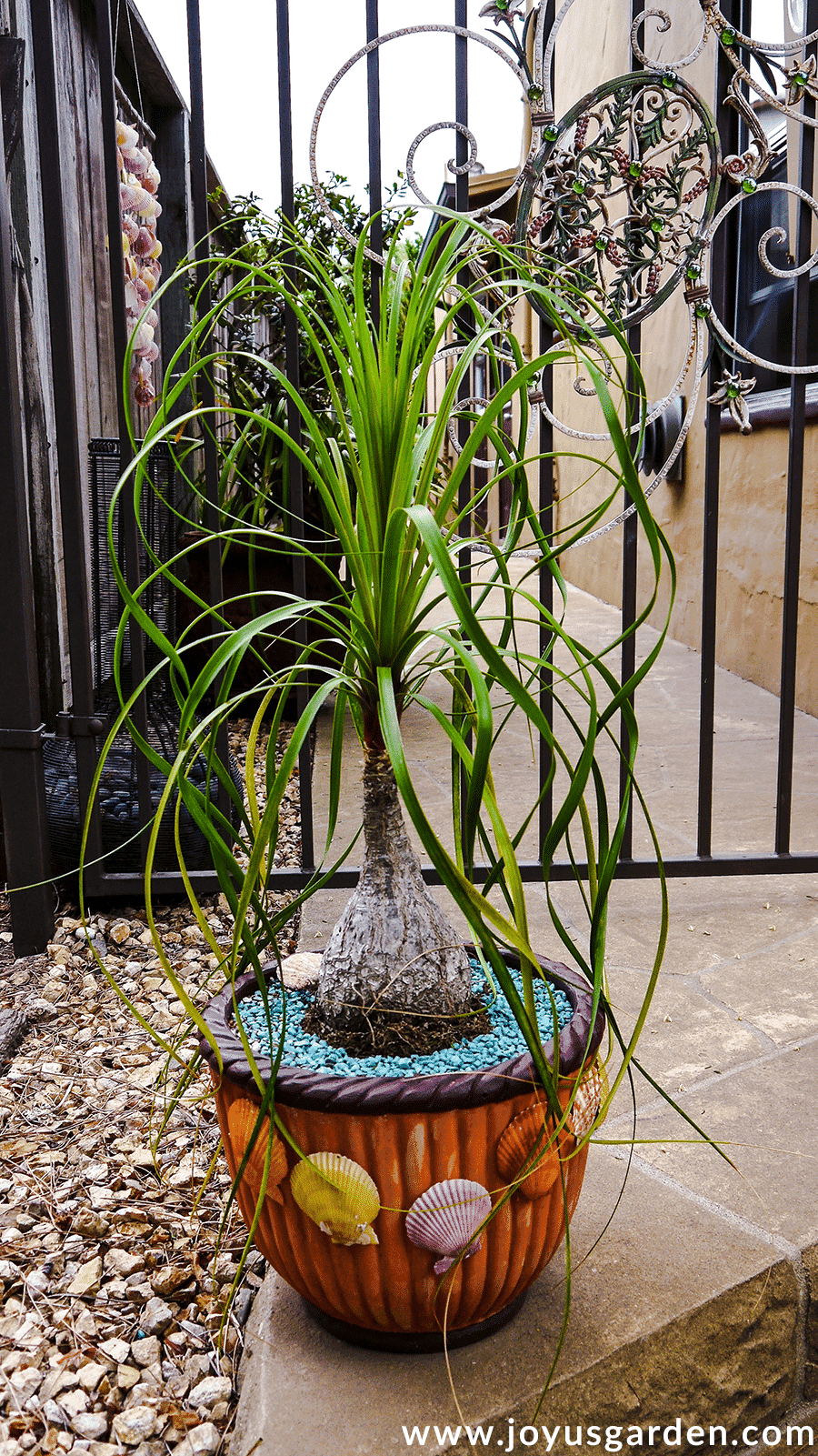
Ponytail Palm Care FAQS
Ponytails thrive in high light indoors. They love a sunny room, but keep them out of hot windows as they can burn.
Oh yes! Too much water will do this desert plant in. It stores water in the bulb, trunk, and roots, so easy does it on the watering frequency.
Ponytail Palms are long-lived if growing in the right conditions. I’ve had my 3-headed Ponytail for around fifteen years now. I’ve seen specimens over 10′ tall, so you know they’ve been around a while!
You can trim off the brown tips if you’d like. It looks a bit more natural if you don’t make blunt cuts.
One of mine grows outdoors year-round here in Tucson. Winter temps have dipped as low as 28F. And, summer days can see temps above 100F.
They sure are!
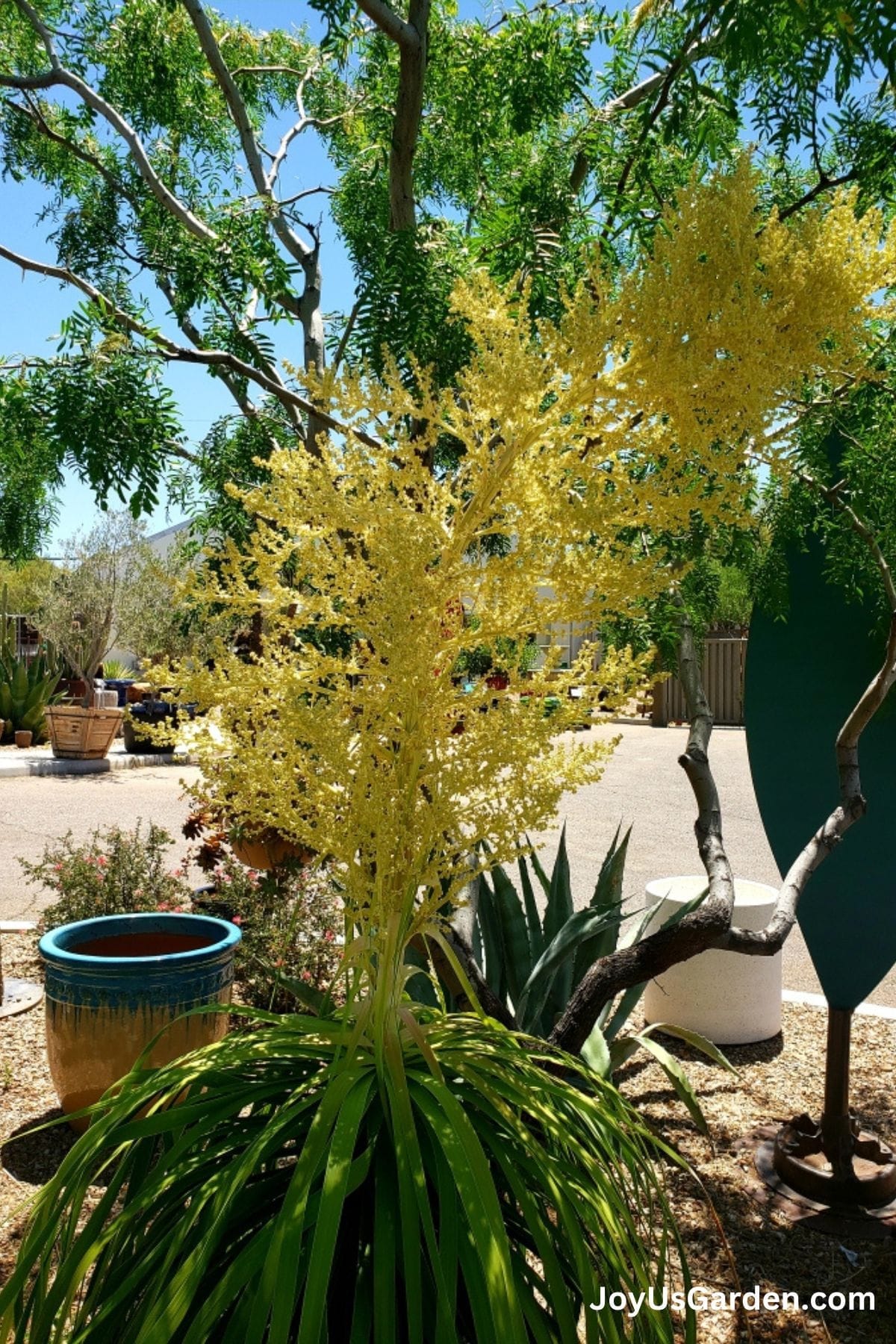
Tucson Cactus Company.
In conclusion
This is straightforward – Ponytail Palm care is a breeze. The two most important things to remember to grow one successfully are: 1) They do best in bright natural light (considered high light), and 2) They’ll rot out in a heartbeat if you overwater them.
I love this wacky low-maintenance houseplant, whether it’s growing indoors or out. If you have enough light, give one a try. With proper care and attention, your Ponytail Palm will thrive for years to come!
Note: This post was published on 9/7/2019. It was updated on 5/24/2023.
Happy gardening,

This post may contain affiliate links, you can read our policies here.

